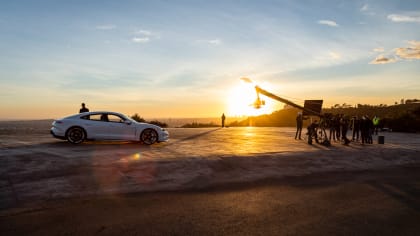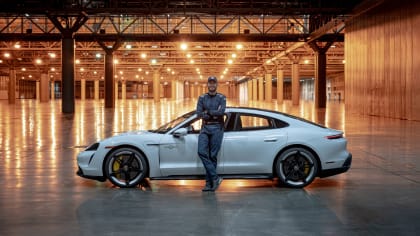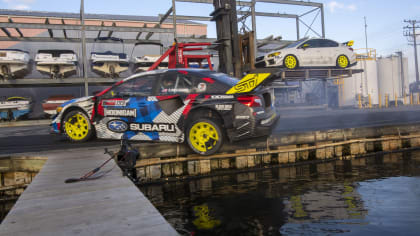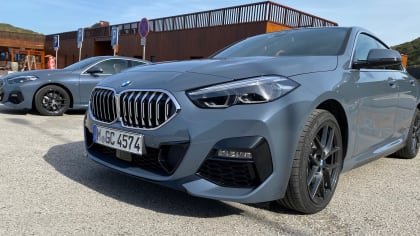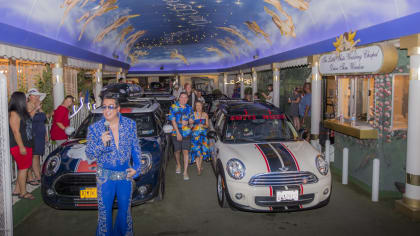Horsepower Meets Actual Horses

The Shared Heritage of Cars and Equestrian Sports
Horses and cars have a lot in common, and don’t let anyone tell you otherwise.
By The Editors
Thu, Jun 20, 2024 03:31 AM PST
Photo by Mike Bird.
First of all, we have horsepower which is a metric used to measure how powerful cars are. Secondly, both serve as a method of transportation and there wouldn’t be cars if it weren’t for horses, at least not for many years later. Thirdly, they are both great sources of adrenaline both when you ride/drive them or when you watch races.
This inspired us to look even deeper and find more connections between horses and cars, particularly in the world of professional racing. On one hand, we have the age-old horse racing and the newly born world of motorsports with highly advanced cars like the F1.
Horse and car races have always fueled us with that much-needed adrenaline. Horse races might have a longer history than car races, but that’s because cars weren’t yet invented during the time when horse races dominated the world.
Horse races are also quite popular in the world of betting. People often watch horse racing events just in order to bet and when they do most of them use the horse racing odds payout calculator by TwinSpires.
Things have changed in the world of racing, and in today’s article, we will explore the shared history of cars and equestrian sports and find more connections.
The Birth of Horsepower
First things first, let's clear up what horsepower really means. Coined by engineer James Watt in the late 18th century, horsepower was a way to compare the output of steam engines to the work done by horses. Watt determined that a horse could turn a mill wheel 144 times in an hour, which equated to 33,000 foot-pounds per minute. This measurement stuck and became a standard for engines, even in our modern cars.
Fun Fact: The First "Horse-less" Carriage
Before we had sleek sedans and roaring sports cars, we had the "horse-less carriage." The earliest automobiles were essentially carriages without the horses, powered by steam, electricity, or internal combustion engines.
Karl Benz's 1886 Motorwagen is often cited as the first true automobile, but these early cars still retained many features from their horse-drawn predecessors, including the basic chassis and wheel designs.
Equestrian Sports: A Noble Tradition
From Ancient Times to Modern Competitions
Horses have been central to human civilization for thousands of years. From ancient chariot races in Rome to the medieval jousting tournaments, equestrian sports have always been a display of skill, bravery, and sometimes a bit of bravado.
Modern equestrian sports are just as popular. In the UK, for instance, a 2023 survey revealed that 3.2 million people participated in horse riding over the last year, showing a slight increase in participation despite a decline in horse ownership.
Events like show jumping, dressage, and eventing are staples of competitions worldwide, and horse racing continues to draw massive crowds and significant economic impact.
The Economic Impact of Equestrian Sports
The equestrian industry isn't just about riding; it's a massive economic powerhouse. In the United States, the equestrian sector contributes approximately $300 billion annually to the economy and supports 1.6 million jobs.
The market for equestrian apparel alone was valued at over $6.5 billion in 2023 and is expected to grow significantly in the coming years.
Safety and Innovation: Lessons Learned
Safety in Equestrian Sports
While cars have seat belts and airbags, horses don't come with such safety features. Riding helmets, however, are crucial. Despite their importance, only 9% of adult riders consistently wear helmets, even though wearing one can reduce the risk of severe head injury by 50%. Given that horseback riding accounts for the highest rate of traumatic brain injuries among sports, promoting helmet use remains a critical safety measure.
Automotive Safety Innovations
On the flip side, the evolution of safety in cars has been dramatic. From the invention of seat belts and airbags to modern autonomous emergency braking systems, the goal has always been to make driving safer. Interestingly, some of these innovations take cues from equestrian principles—maintaining control and ensuring the safety of both the rider (or driver) and their "steed."
The Cultural Impact: Movies, Media, and More
Horses in Pop Culture
From "Black Beauty" to "War Horse," horses have galloped their way into our hearts through literature and film. Equestrian sports and horse-themed media have a timeless appeal, reflecting our fascination with these majestic animals.
Cars in Pop Culture
Similarly, cars have become cultural icons. Think "Fast and Furious," "Cars" or "The Italian Job." These movies highlight our obsession with speed, power, and the freedom that cars symbolize. Both horses and cars serve as symbols of human achievement and the drive to conquer new frontiers.
Horses and cars have shared a lot of similarities throughout the years. They’ve both served as a method of transportation and now they are on top of the adrenaline-fueled entertainment world.
